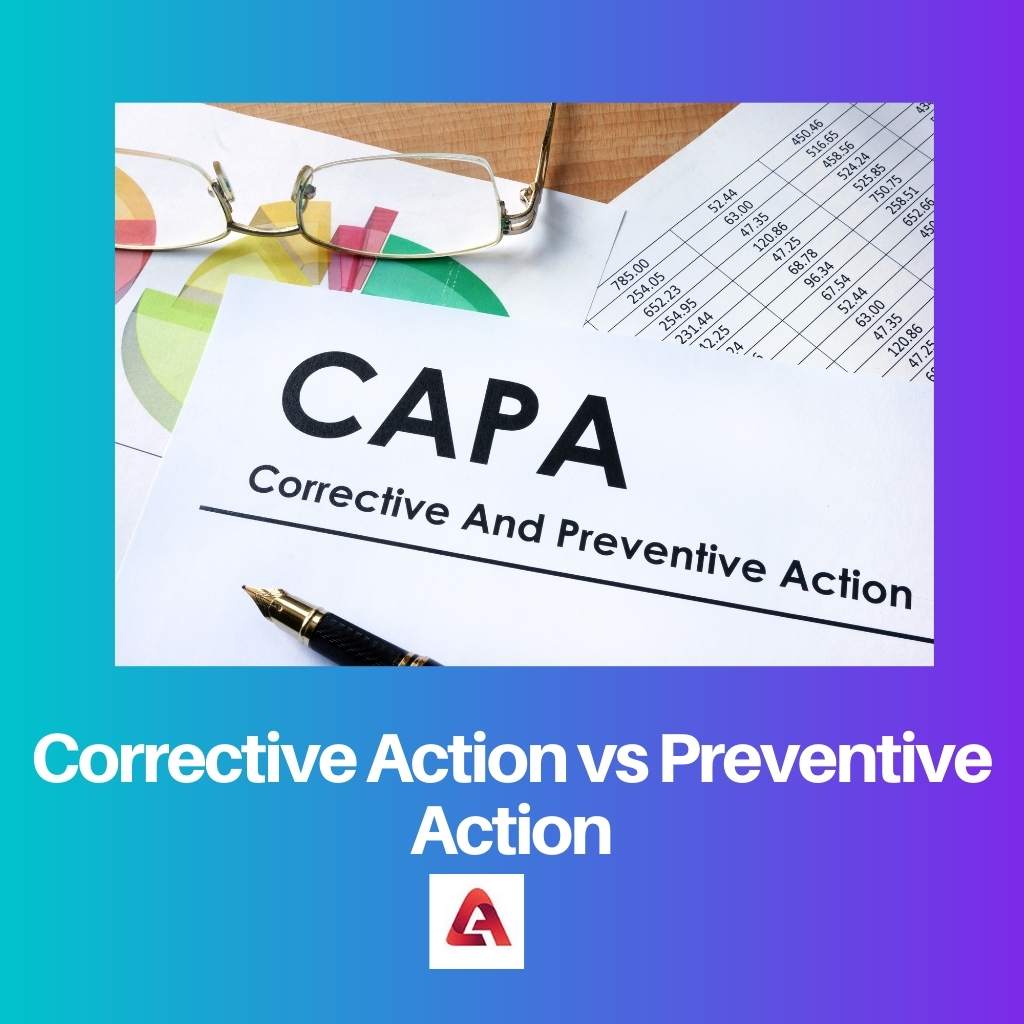Both these concepts were bought into practice for risk-based analysis and analysis of hazards happening. Both are very essential for the after and before of any political, social, or climatic hazardous damage in any country.
Key Takeaways
- Corrective action is taken to correct an existing problem, while preventive action is taken to prevent the problem from occurring in the future.
- Corrective action focuses on addressing the root cause of the problem, while preventive action focuses on identifying potential issues before they occur.
- Corrective action is taken after the problem, while preventive action is taken before the problem occurs.
Corrective Action vs Preventive Action
Corrective action targets existing problems or nonconformities, identifying their root causes and implementing solutions to eliminate them. Preventive action, however, proactively identifies potential issues or risks before they materialize, putting measures in place to minimize or avoid their occurrence, ensuring a smoother, more efficient operation of processes and systems.

A corrective action works in such a manner that it takes into consideration the critical condition of nonconformity that occurs with a certain intensity of risk it generates in an organization.
An action that keeps an eye on focusing on a non-happening of the possibility of a nonconformity so that it does not arise again is known as a preventive action.
Comparison Table
| Parameters of Comparison | Corrective Action | Preventive Action |
|---|---|---|
| Meaning | This is an organization, or a company are plans that are set for identification of the root cause of problems. | This is an organization or a company with a set of activities for the identification of potential risks that might occur in future. |
| Nature | They are reactive. | They are proactive. |
| Activities | This occurs in such a manner that practices such as audits, investigations, and analysis are carried out in an organization. | This takes plan in such a manner that practices such as identifying causes of a particular problem are carried out. |
| Time of occurance | This takes place before the event occurs. | This takes place after the event occurs. |
| Cost | This cost more. | This cost less. |
What is Corrective Action?
To overcome the risk of any nonconformity occurring again, corrective action is taken. A lot of times, an analysis takes the place of nonconformity to happen in the future.
Through internal and external scanning, when a person knows what kind of nonconformity might occur, through the corrective action process, they get to know the intensity of issues that would make this nonconformity happen.
The practice of corrective action helps in reducing the transparency level and also helps in fixing the issue, which sets a benchmark for the future development of an organization.

What is Preventive Action?
The practice of preventive action is an action practised for a no happening of a future uncertain event. In this practice, there is light given to the reinforcement of any related specific process.
This prevention action process, it helps to set the measures and plans to take place when that uncertain nonconformity might take place in the future at a certain point.
The practice of prevention action helps an organization for locating discrepancies. This is done only through Analysing trends and internal auditions through customer reviews.

Main Differences Between Corrective Action and Preventive Action
- The corrective actions in an organization or a company take place before an uncertain event occurs, and on the other hand, prevention action in an organization or a company takes place after the event occurs by pre-planning of measures to be taken.
- The prevention action is less in cost as compared to corrective action, and on the other hand, the other hand, the corrective action is costlier as compared to the prevention action.

- https://academicjournals.org/journal/AJPP/article-abstract/4EF704756791
- https://www.sciencedirect.com/science/article/pii/S0955388699000880